Showing Spotlights 89 - 96 of 237 in category All (newest first):
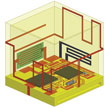 Researchers have demonstrated a fully integrated and packaged wireless sensor for environmental monitoring applications. The disposable sensor was developed using low-cost additive manufacturing technologies; namely, inkjet printing and 3D printing. This is a demonstration of 3D-printed fully-integrated System-on-Package (SoP) employing inkjet-printed sensors. This work could pave the way for low-cost disposable fully integrated wireless sensor nodes.
Researchers have demonstrated a fully integrated and packaged wireless sensor for environmental monitoring applications. The disposable sensor was developed using low-cost additive manufacturing technologies; namely, inkjet printing and 3D printing. This is a demonstration of 3D-printed fully-integrated System-on-Package (SoP) employing inkjet-printed sensors. This work could pave the way for low-cost disposable fully integrated wireless sensor nodes.
Jun 2nd, 2017
 Research groups around the world are taking big strides towards developing ultrathin and flexible sensor devices that could be attached to the skin, or even organs, and monitor vital body functions. However, the adhesion to skin of many of these sensor patches is weak. A new milestone study on skin adhesives for wearable devices is about to change that. It demonstrates that it is possible to strongly and non-invasively attach soft wearable sensors and other devices to dry or wet skin.
Research groups around the world are taking big strides towards developing ultrathin and flexible sensor devices that could be attached to the skin, or even organs, and monitor vital body functions. However, the adhesion to skin of many of these sensor patches is weak. A new milestone study on skin adhesives for wearable devices is about to change that. It demonstrates that it is possible to strongly and non-invasively attach soft wearable sensors and other devices to dry or wet skin.
Jun 1st, 2017
 Metal-organic frameworks (MOFs) are regarded as a new class of porous materials with significant prospects for addressing current challenges pertinent to energy and environmental sustainability. Due to their unique structure design and tunability, MOFs offer great potential for their effective integration and exploration in various sensing applications. Researchers have demonstrated this by developing an advanced sensor for the detection of hydrogen sulfide at room temperature, using thin films of rare-earth metal based MOF.
Metal-organic frameworks (MOFs) are regarded as a new class of porous materials with significant prospects for addressing current challenges pertinent to energy and environmental sustainability. Due to their unique structure design and tunability, MOFs offer great potential for their effective integration and exploration in various sensing applications. Researchers have demonstrated this by developing an advanced sensor for the detection of hydrogen sulfide at room temperature, using thin films of rare-earth metal based MOF.
Feb 10th, 2017
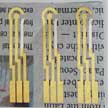 Paper, probably the cheapest and most widely used flexible and eco-friendly material in daily life, is a promising substrate for making flexible devices ranging from electronics to microfluidics, energy storage and sensors. In new work, researchers have developed a new and reliable method to achieve conformal coating of individual cellulose fibers in the paper and the fabrication of a metal electrode via patterning of gold and silver layers on the coated paper.
Paper, probably the cheapest and most widely used flexible and eco-friendly material in daily life, is a promising substrate for making flexible devices ranging from electronics to microfluidics, energy storage and sensors. In new work, researchers have developed a new and reliable method to achieve conformal coating of individual cellulose fibers in the paper and the fabrication of a metal electrode via patterning of gold and silver layers on the coated paper.
Jan 10th, 2017
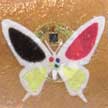 A skin-like, wearable system combines colorimetric and electronic function for precise dosimetry in the UV-A and UV-B regions of the spectrum. This platform is suitable for determination of instantaneous UV exposure levels and skin temperature. Exposure to ultraviolet (UV) radiation is a major risk factor for most skin cancers. UV rays damage the DNA of skin cells. Skin cancers start when this damage affects the DNA of genes that control skin cell growth. Creating awareness in UV exposure is widely believed to be an important aspect in improving skin health.
A skin-like, wearable system combines colorimetric and electronic function for precise dosimetry in the UV-A and UV-B regions of the spectrum. This platform is suitable for determination of instantaneous UV exposure levels and skin temperature. Exposure to ultraviolet (UV) radiation is a major risk factor for most skin cancers. UV rays damage the DNA of skin cells. Skin cancers start when this damage affects the DNA of genes that control skin cell growth. Creating awareness in UV exposure is widely believed to be an important aspect in improving skin health.
Nov 23rd, 2016
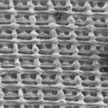 Carbon nanotube enabled nanocomposites have received much attention as a highly attractive alternative to conventional composite materials due to their mechanical, electrical, thermal, barrier and chemical properties such as electrical conductivity, increased tensile strength, improved heat deflection temperature, or flame retardancy. In new work, researchers report the fabrication of highly conductive carbon nanotube/polylactic acid nanocomposites used as 3D printable conductive inks for fabrication of conductive scaffold structures applicable as liquid sensors.
Carbon nanotube enabled nanocomposites have received much attention as a highly attractive alternative to conventional composite materials due to their mechanical, electrical, thermal, barrier and chemical properties such as electrical conductivity, increased tensile strength, improved heat deflection temperature, or flame retardancy. In new work, researchers report the fabrication of highly conductive carbon nanotube/polylactic acid nanocomposites used as 3D printable conductive inks for fabrication of conductive scaffold structures applicable as liquid sensors.
Oct 6th, 2016
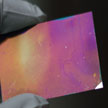 Point-of-care diagnostics, food safety screening, and environmental monitoring will massively benefit from the label-free, inexpensive, rapid, handheld sensor devices that are currently under development. To date, there has been a lot of work reported on either SERS or plasmonic sensing but very few have reported sensing with the same device for both SERS and plasmonics, let alone plasmonic colorimetry naked-eye sensing. For the first time ever, researchers have reported the combination of naked-eye plasmonic colorimetry and high-enhancement and high-uniformity SERS in one sensor.
Point-of-care diagnostics, food safety screening, and environmental monitoring will massively benefit from the label-free, inexpensive, rapid, handheld sensor devices that are currently under development. To date, there has been a lot of work reported on either SERS or plasmonic sensing but very few have reported sensing with the same device for both SERS and plasmonics, let alone plasmonic colorimetry naked-eye sensing. For the first time ever, researchers have reported the combination of naked-eye plasmonic colorimetry and high-enhancement and high-uniformity SERS in one sensor.
Aug 19th, 2016
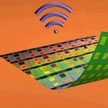 Researchers have developed a highly manufacturable integration strategy for making 3D flexible sensor arrays and connecting them to control electronics based on the widely popular phrase, 'Two sides of the same coin'. Sensor arrays and control elements for flexible electronics devices are usually placed on the same plane, unnecessary requiring additional area, and causing problems of heat dissipation. These challenges motivated researchers to come up with an area-efficient solution for the problem of connecting sensors and electronics together in such a way that electronics can be kept away from the sensed surface. This is the first time ever the concept of double sided flexible 3D electronics has been introduced in the flexible and wearable electronics industry.
Researchers have developed a highly manufacturable integration strategy for making 3D flexible sensor arrays and connecting them to control electronics based on the widely popular phrase, 'Two sides of the same coin'. Sensor arrays and control elements for flexible electronics devices are usually placed on the same plane, unnecessary requiring additional area, and causing problems of heat dissipation. These challenges motivated researchers to come up with an area-efficient solution for the problem of connecting sensors and electronics together in such a way that electronics can be kept away from the sensed surface. This is the first time ever the concept of double sided flexible 3D electronics has been introduced in the flexible and wearable electronics industry.
Jul 26th, 2016
 Researchers have demonstrated a fully integrated and packaged wireless sensor for environmental monitoring applications. The disposable sensor was developed using low-cost additive manufacturing technologies; namely, inkjet printing and 3D printing. This is a demonstration of 3D-printed fully-integrated System-on-Package (SoP) employing inkjet-printed sensors. This work could pave the way for low-cost disposable fully integrated wireless sensor nodes.
Researchers have demonstrated a fully integrated and packaged wireless sensor for environmental monitoring applications. The disposable sensor was developed using low-cost additive manufacturing technologies; namely, inkjet printing and 3D printing. This is a demonstration of 3D-printed fully-integrated System-on-Package (SoP) employing inkjet-printed sensors. This work could pave the way for low-cost disposable fully integrated wireless sensor nodes.
 Subscribe to our Nanotechnology Spotlight feed
Subscribe to our Nanotechnology Spotlight feed





